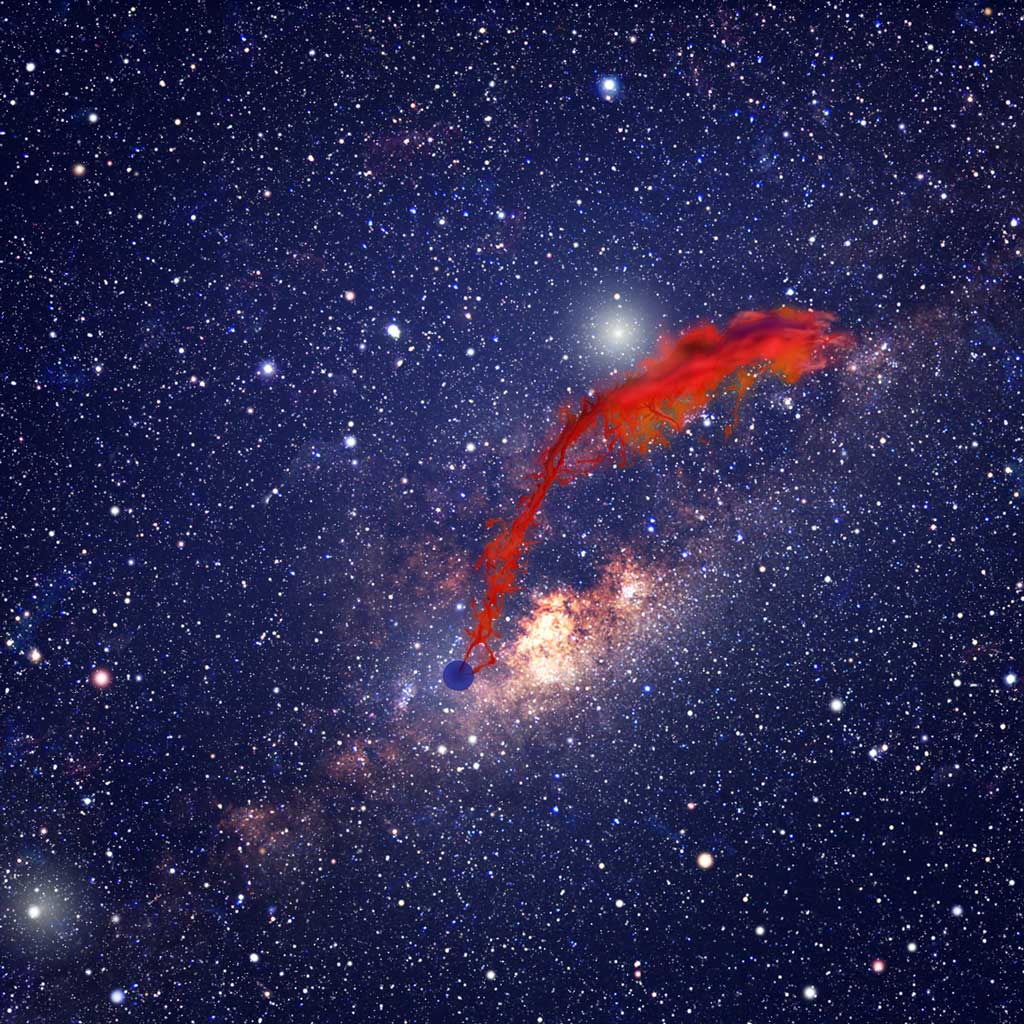A major goal of the SEEDS Project is to explore hundreds of nearby stars in an effort to directly image extrasolar planets and protoplanetary — debris — disks. As part of this important project, the current team of researchers used the Subaru High Contrast Instrument for the Subaru Next Generation Adaptive Optics (HiCIAO) mounted on the Subaru Telescope to observe UX Tau A, a young star in the constellation Taurus’ molecular cloud, or “star nursery,” where many lower mass stars are being born. They were able to detect the disk of gas and dust around the star, its “circumstellar disk,” which is then referred to as a protoplanetary disk when it is a site of planet formation.
The team made a detailed study of UX Tau A in the near-infrared wavelengths. They measured the polarization of infrared light to find out the distribution of the dust particles that scattered the infrared light. Polarized light reflected from dust particles gives important information about planetary formation in disks. Although dust particles only make up a tiny fraction of the protoplanetary disk, they can develop into planetesimals — solid objects less than a kilometer in diameter — and eventually planets.
The light from this disk is strongly polarized; its angle of polarization shows a concentric pattern relative to the central star. “The objects we have observed so far show a high degree of polarization no matter what the angle is,” said Yoichi Itoh from the University of Hyogo. “However, the polarization of this particular object ranges widely from 2 percent to 66 percent as the polarization angle changes. It was a pleasant challenge to explain this characteristic.”
Dust particles in the protoplanetary disk originally came from interstellar space and are only 0.1 micron in size. Small grain particles, which are much smaller than the observed wavelength, can produce a high degree of polarization regardless of their location. If the grain size is similar to the observed wavelength, the scattering performance is different. However, these principles do not account for the current observation. “Only particles with a nonspherical shape and a size of 30 microns, which is much larger than the near-infrared wavelength that was used for the observation, can explain the features of our observation,” said Itoh.
How did this happen? Dust in the disk of UX Tau A collided and stuck together to grow to 30 microns. The researchers were fortunate to witness dust particles at a critical phase in their path to becoming a fully-grown planet in the protoplanetary disk.
A major goal of the SEEDS Project is to explore hundreds of nearby stars in an effort to directly image extrasolar planets and protoplanetary — debris — disks. As part of this important project, the current team of researchers used the Subaru High Contrast Instrument for the Subaru Next Generation Adaptive Optics (HiCIAO) mounted on the Subaru Telescope to observe UX Tau A, a young star in the constellation Taurus’ molecular cloud, or “star nursery,” where many lower mass stars are being born. They were able to detect the disk of gas and dust around the star, its “circumstellar disk,” which is then referred to as a protoplanetary disk when it is a site of planet formation.
The team made a detailed study of UX Tau A in the near-infrared wavelengths. They measured the polarization of infrared light to find out the distribution of the dust particles that scattered the infrared light. Polarized light reflected from dust particles gives important information about planetary formation in disks. Although dust particles only make up a tiny fraction of the protoplanetary disk, they can develop into planetesimals — solid objects less than a kilometer in diameter — and eventually planets.
The light from this disk is strongly polarized; its angle of polarization shows a concentric pattern relative to the central star. “The objects we have observed so far show a high degree of polarization no matter what the angle is,” said Yoichi Itoh from the University of Hyogo. “However, the polarization of this particular object ranges widely from 2 percent to 66 percent as the polarization angle changes. It was a pleasant challenge to explain this characteristic.”
Dust particles in the protoplanetary disk originally came from interstellar space and are only 0.1 micron in size. Small grain particles, which are much smaller than the observed wavelength, can produce a high degree of polarization regardless of their location. If the grain size is similar to the observed wavelength, the scattering performance is different. However, these principles do not account for the current observation. “Only particles with a nonspherical shape and a size of 30 microns, which is much larger than the near-infrared wavelength that was used for the observation, can explain the features of our observation,” said Itoh.
How did this happen? Dust in the disk of UX Tau A collided and stuck together to grow to 30 microns. The researchers were fortunate to witness dust particles at a critical phase in their path to becoming a fully-grown planet in the protoplanetary disk.










